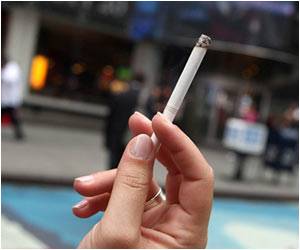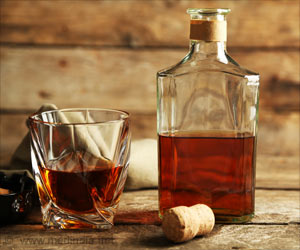A new study has discovered that a problem in eye blinking conditioning (EBC) may aid in identifying children who have been exposed to alcohol while in the womb.
A new study has discovered that a problem in eye blinking conditioning (EBC) may aid in identifying children who have been exposed to alcohol while in the womb.
The discovery would identify children possibly affected by foetal alcohol syndrome (FAS) and also those who do not have distinctive FAS features.The study led by Sandra W. Jacobson, a professor in the department of psychiatry and behavioural neurosciences at Wayne State University School of Medicine, also stated that all the children who have been exposed to alcohol show distinctive facial anomalies associated with FAS.
It was also mentioned in the study that while children with FAS have identifiable craniofacial abnormalities, children with alcohol-related neurodevelopmental disorder (ARND) may have considerable cognitive impairments without facial anomalies.
'Eyeblink conditioning (EBC) is a Pavlovian paradigm that involves temporal pairing of a conditioned stimulus, such as a tone, with an unconditioned stimulus, such as an air puff. Animal studies have shown that binge consumption of alcohol during pregnancy impairs EBC. We wanted to see if we could use the EBC paradigm to identify underlying or subcortical deficits that are specifically affected by prenatal alcohol exposure in children,' explained Jacobson.
'The present study provides the first documentation that clearly points to an FAS relationship because of the large sample size, the prospective follow-up of children from birth, and the careful measurement of prenatal exposure to alcohol and other drugs. Moreover, the deficits in EBC were not related to IQ or [found in nonexposed children with] microcephaly, which are often confounding factors,' said Lynn T. Singer, Deputy Provost and vice president for academic programs at Case Western Reserve University.
The researchers knew that the prevalence of FAS in mixed-ancestry women in Cape Town was amongst the highest in the world, thus they have been studying a group of women and their children since 1998.
Advertisement
Usually after repeated pairings are done, a child as young as five months old will develop a conditioned eyeblink response. Along with the EBC sessions, expert dysmorphologists assessed FAS status among the five-year-olds.
Advertisement
She added: In addition, about two-thirds of the children with PFAS and two-thirds of the heavily exposed nonsyndromal children also did not meet criteria for conditioning. Given that we controlled for IQ and that EBC was not impaired in non-alcohol-exposed children with microcephaly, these findings suggest that the EBC deficit does not reflect impaired intellectual ability but rather is a direct effect of the fetal alcohol exposure.'
'This study clearly links one brain area to the learning deficits experienced by FAS children, whether or not they have physical manifestations of the condition, and thus can provide a basis for the development of remediation programs. Second, since normal human infants reach functional capacity on the EBC response by five months of age, and since the EBC deficit appears to be so sensitive, infants at risk can be identified early in life, and intervention programs can begin when the plasticity of the brain is greatest and have the strongest effect,' said Singer.
'Our results show that there was a dose-response relation between alcohol exposure and FASD diagnosis and that a fundamental element of learning is affected by prenatal alcohol exposure. We next need to extend the study of the EBC paradigm with fetal alcohol-exposed children to see how this exposure impacts on children at different ages,' said Jacobson.
Te researchers have now flagged a pilot study to examine EBC in eight-to-11-year-old mixed-ancestry children in Cape Town to see whether the findings at five years of age are also apparent in older children.
They also plan to revisit the five-year-old group at 8.5 years of age to examine their EBC and, in addition, assess EBC in infants to see how early this deficit can be detected.
Results of the study are published in the recent issue of Alcoholism: Clinical & Experimental Research.
Source-ANI
SRM/L











